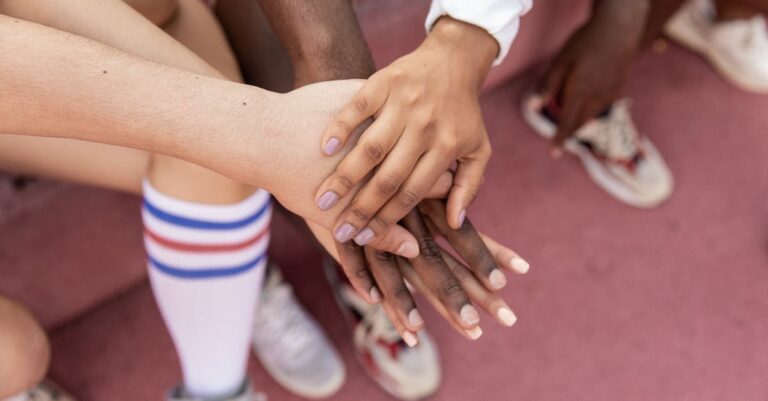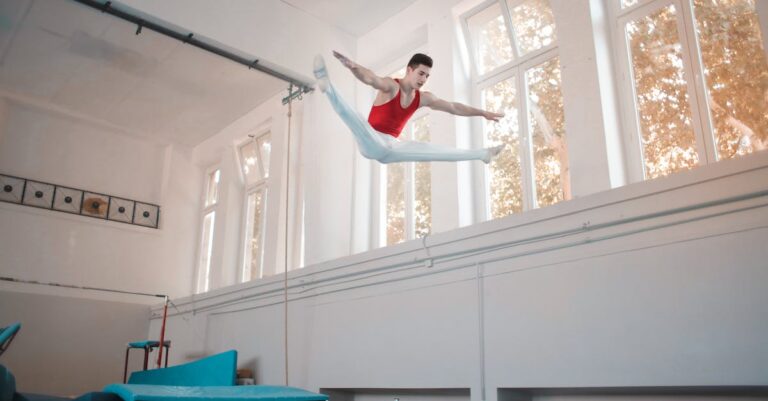From Athlete to Expert: Sharing My Trampoline Journey and Insights
Introduction
Background and passion for trampolining
Trampolining has always been more than just a sport for me. It is a passion that has shaped my entire life. From a young age, I was drawn to the exhilarating feeling of soaring through the air and defying gravity. As I grew older, my love for trampolining only intensified, and I dedicated countless hours to perfecting my skills and pushing the boundaries of what I thought was possible. Trampolining has taught me discipline, perseverance, and the importance of setting goals. It has also provided me with incredible opportunities to compete at a high level and travel the world. This article is a reflection of my journey and a chance to share the insights and lessons I have gained along the way.
Transition from athlete to expert
Transitioning from being an athlete to becoming an expert in trampolining has been an incredible journey for me. As someone who has dedicated years to training and competing in this sport, I have gained a deep understanding of the technical aspects, the physical demands, and the mental fortitude required to excel in trampolining. Through countless hours of practice, I have honed my skills and developed a keen eye for detail, allowing me to analyze and dissect every movement and technique. This transition has not only broadened my knowledge and expertise in trampolining, but it has also given me a new perspective on the sport. I now have the opportunity to share my insights and experiences with others, helping them navigate their own trampoline journeys and reach their full potential. It is truly fulfilling to be able to pass on my knowledge and passion for trampolining to the next generation of athletes and enthusiasts.
Purpose of sharing journey and insights
The purpose of sharing my journey and insights is to inspire and motivate others who may be interested in trampolining or pursuing a similar path. Through my experiences, I hope to offer guidance and advice to those who are just starting out or looking to improve their skills. By sharing the challenges I faced, the lessons I learned, and the achievements I accomplished, I aim to provide a relatable and encouraging narrative that can resonate with aspiring athletes. Additionally, I hope that by sharing my journey, I can contribute to the trampolining community and foster a sense of camaraderie among fellow enthusiasts.
Trampoline Training and Techniques

Basic trampoline skills and drills
Basic trampoline skills and drills are essential for anyone looking to excel in the sport. These fundamental skills lay the foundation for more advanced techniques and tricks. Some of the basic skills include proper body positioning, bouncing technique, and landing mechanics. It is important to master these skills before progressing to more complex maneuvers. Additionally, incorporating drills into your trampoline training routine can help improve strength, coordination, and overall performance. By consistently practicing and refining these basic skills and drills, athletes can enhance their trampoline abilities and reach new heights in their performance.
Advanced trampoline techniques
In the world of trampolining, mastering the basic techniques is just the beginning. As athletes progress in their trampoline journey, they often seek to challenge themselves with advanced trampoline techniques. These techniques require a higher level of skill, strength, and coordination, pushing athletes to new heights literally and figuratively. From complex flips and twists to intricate combinations and sequences, advanced trampoline techniques showcase the athleticism and creativity of trampolinists. However, mastering these techniques is not without its risks. It requires dedication, proper training, and a deep understanding of body mechanics to execute them safely and effectively. Nevertheless, for trampolinists who are willing to put in the time and effort, the rewards of mastering advanced trampoline techniques are truly exhilarating.
Training regimen and tips
When it comes to my training regimen and tips for trampoline, consistency is key. I make sure to dedicate a specific time each day for practice and focus on improving my skills. Additionally, I always warm up before starting any intense trampoline session to prevent injuries. It’s important to listen to your body and not push yourself too hard. Another tip is to vary your routine and incorporate different exercises to target different muscle groups. Lastly, don’t forget to have fun and enjoy the journey of becoming an expert trampolinist!
Competitive Trampolining

Experience in competitive trampolining
As an athlete, I have had the privilege of experiencing competitive trampolining at its highest level. From the adrenaline rush before a routine to the feeling of weightlessness as I soar through the air, every moment on the trampoline has been exhilarating. Competing against some of the best trampolinists in the world has taught me the importance of discipline, dedication, and perseverance. It has been a journey filled with ups and downs, but the lessons I have learned and the friendships I have made along the way have made it all worthwhile. Through my experiences in competitive trampolining, I have gained a deep understanding of the sport and developed insights that I am eager to share with others.
Preparing for competitions
Preparing for competitions is an essential part of my trampoline journey. It requires dedication, discipline, and a lot of hard work. To excel in competitions, I focus on improving my skills, strength, and flexibility. I follow a strict training regimen that includes intense workouts, practice sessions, and mental preparation. Additionally, I analyze my competitors’ performances and study their techniques to gain a competitive edge. Preparing for competitions not only helps me perform at my best but also pushes me to constantly strive for improvement. It is a challenging yet rewarding process that fuels my passion for trampolining.
Mental and physical challenges
Mental and physical challenges are an inherent part of my trampoline journey. As an athlete, I have faced numerous obstacles that have tested my resilience and determination. From the fear of attempting new and complex maneuvers to the physical strain on my body, each challenge has pushed me to my limits. However, it is through these challenges that I have grown both mentally and physically. The mental challenges have taught me the importance of focus, discipline, and perseverance. Meanwhile, the physical challenges have strengthened my body, improving my agility, balance, and coordination. Overall, the journey from athlete to expert on the trampoline has been a transformative experience, shaping me into a stronger and more resilient individual.
Injury Prevention and Recovery

Common trampoline injuries
Trampolining is a thrilling and fun activity that has gained popularity over the years. However, it is not without its risks. Common trampoline injuries include sprained ankles, fractures, and head injuries. These injuries can occur due to improper landing techniques, collisions with other trampolinists, or even faulty equipment. It is important for trampolinists to be aware of these risks and take necessary precautions to prevent injuries. Wearing protective gear, such as helmets and ankle braces, and practicing proper landing techniques can greatly reduce the likelihood of getting injured while trampolining.
Preventive measures and safety guidelines
Preventive measures and safety guidelines are crucial in any physical activity, and trampolining is no exception. To ensure a safe and enjoyable experience, it is important to follow a few key guidelines. First and foremost, always have proper supervision when using a trampoline, especially for children. Additionally, it is essential to use a trampoline that is in good condition and regularly inspected for any damages or wear. It is also important to use appropriate safety equipment, such as padding and a safety net, to minimize the risk of injury. Finally, it is crucial to learn and practice proper trampoline techniques, including how to land safely and avoid dangerous maneuvers. By adhering to these preventive measures and safety guidelines, trampolining can be a fun and safe activity for everyone.
Rehabilitation and recovery strategies
Rehabilitation and recovery strategies are essential components of any athlete’s journey, and my trampoline journey was no exception. After experiencing a major injury that left me sidelined for months, I had to develop a comprehensive plan to regain my strength and return to my sport. Physical therapy played a crucial role in my rehabilitation, helping me rebuild my muscles and improve my flexibility. Additionally, I incorporated various recovery strategies into my routine, such as regular rest days, proper nutrition, and adequate sleep. These strategies not only helped me recover faster but also prevented future injuries. Through my experience, I learned the importance of listening to my body and giving it the care it needs to thrive. Rehabilitation and recovery are not just about getting back on your feet; they are about building a strong foundation for long-term success in any athletic endeavor.
Trampoline Coaching and Teaching

Becoming a trampoline coach
Becoming a trampoline coach has been a transformative experience for me. It all started when I was a young athlete, spending countless hours on the trampoline, honing my skills and pushing my limits. As I grew older, I realized that my passion for trampolining extended beyond just competing. I wanted to share my knowledge and love for the sport with others. So, I embarked on a journey to become a certified trampoline coach. The process was rigorous, requiring me to learn about safety protocols, teaching techniques, and how to effectively communicate with athletes of all ages and skill levels. Through this journey, I not only gained the necessary expertise to coach trampolining, but I also developed invaluable leadership and mentorship skills. Today, I take great pride in being able to guide and inspire aspiring trampolinists, helping them discover their own potential and achieve their goals.
Effective teaching methods
Effective teaching methods are crucial in any field, and trampoline training is no exception. As someone who has transitioned from being an athlete to becoming an expert in trampoline, I have come to realize the importance of employing effective teaching methods to ensure the success and progress of my students. One of the most effective teaching methods I have found is breaking down complex skills into smaller, more manageable steps. This allows students to build a solid foundation and gradually progress towards more advanced techniques. Additionally, providing clear and concise instructions, along with demonstrations and visual aids, can greatly enhance the learning experience. By using a combination of verbal, visual, and hands-on teaching methods, I am able to cater to different learning styles and ensure that each student receives the necessary guidance to excel in trampoline training. Overall, effective teaching methods play a vital role in fostering a positive and productive learning environment, enabling students to reach their full potential in trampoline sports.
Inspiring and motivating athletes
As an athlete who has gone through the ups and downs of trampoline training, I understand the challenges and obstacles that athletes face on their journey. Through my own experiences, I have learned the importance of staying motivated and inspired throughout the process. It is my goal to share my journey and insights to inspire and motivate athletes who are passionate about trampoline. By sharing my story, I hope to encourage athletes to push their boundaries, overcome setbacks, and strive for excellence in their sport. Through hard work, dedication, and a positive mindset, I believe that any athlete can achieve their goals and reach new heights in their trampoline journey.
Life Lessons and Insights

Discipline and perseverance
Discipline and perseverance are the cornerstones of any successful journey, and my trampoline journey is no exception. From the early days of learning basic jumps to the intense training sessions required to perfect advanced tricks, I quickly realized that without discipline, progress would be limited. It takes a strong commitment to stick to a training schedule, push through physical and mental challenges, and constantly strive for improvement. Perseverance is equally crucial, as there were many times when I faced setbacks and failures. However, I learned to view these obstacles as opportunities for growth and used them to fuel my determination. Through discipline and perseverance, I have not only become a skilled trampolinist but also developed valuable life skills that extend beyond the sport.
Goal-setting and achievement
Goal-setting is a crucial aspect of any journey, and my trampoline journey was no exception. From the beginning, I set specific goals for myself, both in terms of skill progression and personal development. Whether it was mastering a new trick or improving my overall fitness level, having clear goals helped me stay focused and motivated. Along the way, I encountered challenges and setbacks, but I never lost sight of my objectives. Through perseverance and dedication, I was able to achieve these goals and surpass my own expectations. The sense of accomplishment and fulfillment that came with each milestone reached was truly rewarding. Setting goals not only provided direction but also instilled a sense of purpose and determination in my trampoline journey. It taught me the importance of planning, perseverance, and the power of self-belief. Goal-setting is a valuable skill that can be applied to any aspect of life, and I am grateful for the lessons it has taught me on my journey from athlete to expert.
Building resilience and overcoming setbacks
Building resilience and overcoming setbacks are essential skills that I have developed throughout my trampoline journey. As an athlete, I have faced numerous challenges and setbacks, from injuries to failures in competitions. However, these obstacles have only fueled my determination to bounce back stronger and more resilient. I have learned to embrace setbacks as opportunities for growth and to view them as stepping stones towards success. Through perseverance and a positive mindset, I have been able to overcome adversity and achieve my goals. The trampoline has taught me the importance of resilience, both on and off the mat, and has shaped me into the confident and resilient individual I am today.







